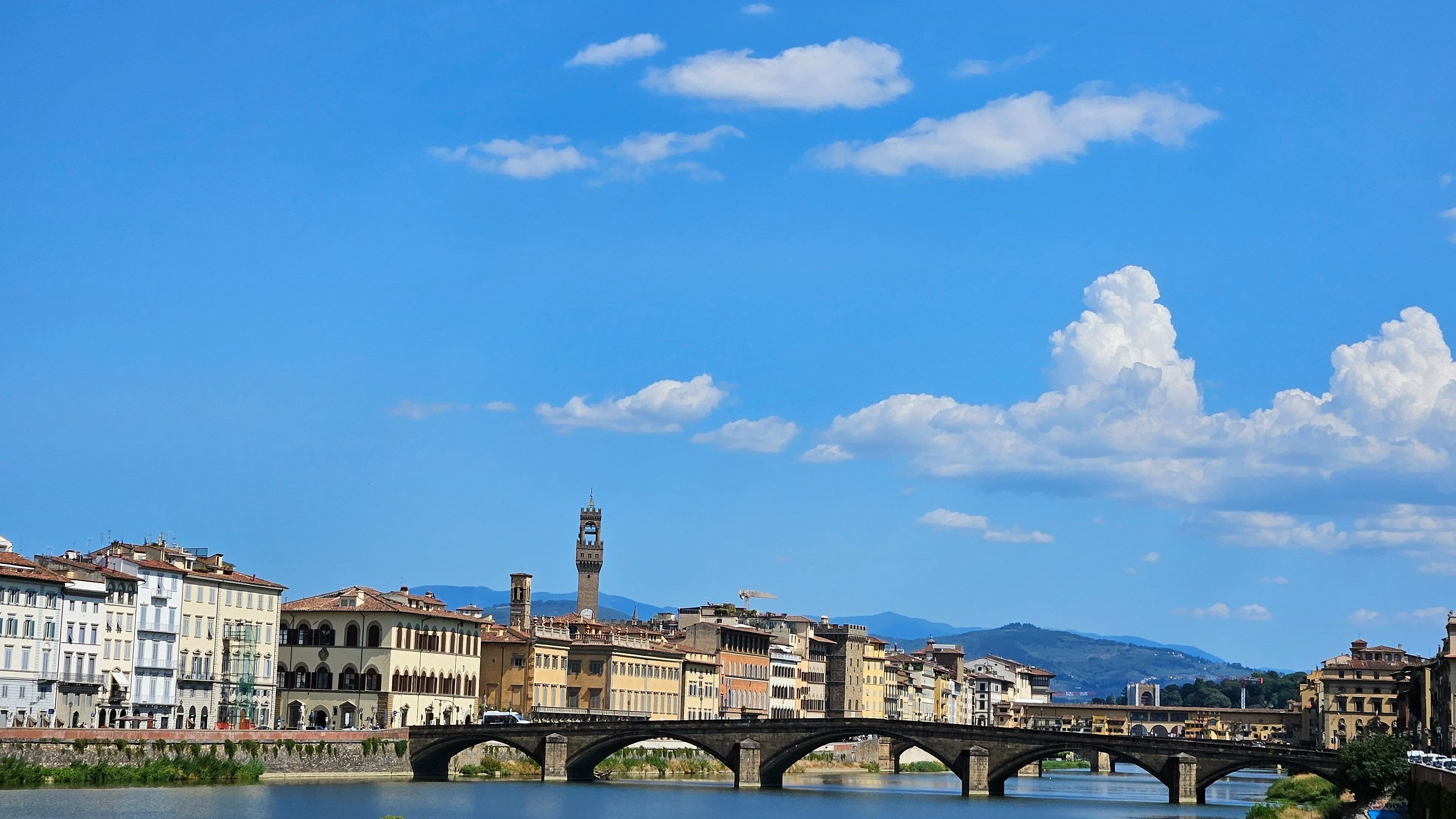
Panorama view of Florence.
Credit: Ashwin Rajagopalan
It’s a tough decision but if I have to pick Italy’s most photogenic city, it would be Florence. Most seasoned city visitors will recommend spending at least three days in Florence to truly immerse yourself in all its charms. But not all of us have the luxury of time as we like to conquer cities faster than medieval armies with our preferred weapon — the mobile ‘shooter’. Both my encounters with Florence have been brief and that’s what keeps me coming back. As I discovered, 24 hours can be a lot of time in Florence, but you need to plan ahead and possess tremendous energy levels.
I took a two-hour train from Rome. It’s the fastest way to get here if you’re already in Italy. It’s best to explore Florence on foot; jump on to one of the local buses in case you’re on a tight schedule. Florence has some of Europe’s most charming Airbnb and boutique-style accommodation options. My host also doubled up as my Florence guide and gave me valuable tips to ‘conquer’ the city on a tight schedule. My first stop was one of Europe’s most photographed bridges. Few bridges anywhere in the world can match the charm or history of Ponte Vecchio. This medieval segmental arch bridge (14th Century) was built over the narrowest point of the river Arno — which scythes through Florence.
As with any of Florence’s iconic landmarks, many legends surround the Ponte Vecchio about how this was the only bridge in Florence that was not destroyed by the retreating Nazi army in 1944 — courtesy of an express order from Adolf Hitler. The term bankruptcy is believed to have originated here. Legend has it that soldiers would destroy the table where money changers and traders sold their wares and could not pay their dues. This used to be referred to as bancorotto — broken table, forcing these merchants to go out of business. The Uffizi Gallery offers some of the best views of the bridge but that’s not the only reason to visit this Florentine landmark. No better place is a testament to the city’s lead role in the Renaissance. Visitors queue up to see Leonardo da Vinci’s masterpiece — Annunciation (dates back to 1472-1475) and Sandro Botticelli’s stunning ‘Birth of Venus’. This is one of the spots where I truly lost the race against time. I had to contend with two hours at a museum where art aficionados sometimes spend a couple of days.
Uffizi is a treasure trove of Renaissance-era paintings and many of the artists here enjoyed the patronage of one of Florence’s first families — the Medicis, made even more popular by the Netflix show of the same name. Florence’s reputation as a Renaissance hub that transformed Europe is intertwined with tales of the Medicis. I made time to visit one of Florence’s oldest churches — the Basilica di San Lorenzo which dates back to 393 AD. It’s also the final resting place of all the principal members of the Medici family. The Medicis have left their legacy all over Florence including the Piazza del Uomo, the city’s charming town square that is home to some of the city’s best-known structures. The Cattedrale di Santa Maria del Fiore or simply the Florence Cathedral is probably the most famous of these. The cathedral’s imposing dome is its standout architectural feature.
This Gothic-style cathedral was first commissioned in 1296, the massive dome was added later, in 1436. Filippo Brunelleschi, one of the key figures of the Renaissance designed this dome — the largest brick dome ever constructed. The Baptistery and the Giotto Campanile (a formidable bell tower) completed the Cathedral complex. The most striking feature of this complex — now a UNESCO-recognised World Heritage complex, is its imposing façade which was envisioned in the early 15th century. Not all of Florence’s landmarks date back to the Renaissance era, there’s the Piazale Michelangelo, a Florentine piazza constructed in 1869, south of the city centre that offers sweeping views. Locals will tell you that Florence is a city of panoramas, Piazale Michelangelo is a testimony. Not all travel experiences in Florence can be ticked off on an impulse. I assumed I could walk into the Accademia Gallery Museum and greet Florence’s most legendary art exhibit without a prior appointment. But after nearly an hour in the line, I gave up without a glimpse of Michelangelo’s iconic sculpture of David. A quick lunch at a nondescript trattoria (café) helped cope with that disappointment somewhat. Gelatos are always a no-brainer in most parts of Italy and then there’s one of the region’s most emblematic dishes — a T-bone steak the locals call Bistecca alla Fiorentina and the classic Tuscan salad — Panzanella created with leftover bread and fresh local ingredients like mozzarella and juicy tomatoes as the perfect accompaniment.
You might think it’s impossible to find quiet moments during a frenzied trip where you can apply the pause button and truly savour the destination. My moment came at sunset. I found the perfect vantage point to watch the sun go down near the Ponte Vecchio. The butchers and traders from the days of the Renaissance may have been replaced by the jewellery and souvenir stores but the exteriors of the bridge haven’t changed much since the 14th century, neither have all the surrounding buildings that come together for the perfect Florence panorama image. It’s easy to imagine you’re in the middle of the Renaissance era. Florence was always the cradle of the Renaissance and continues to work its charm well into the 21st century.